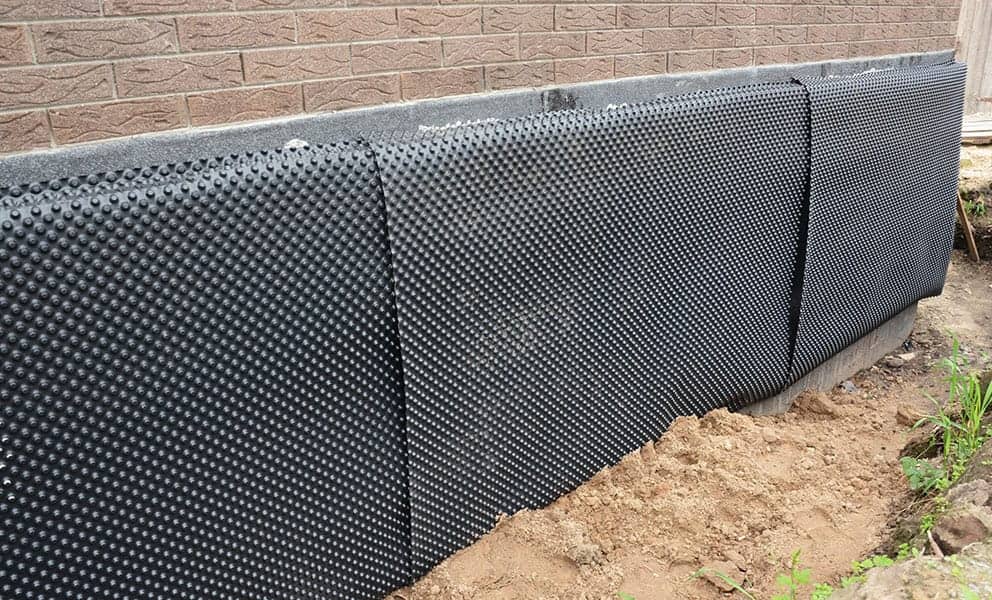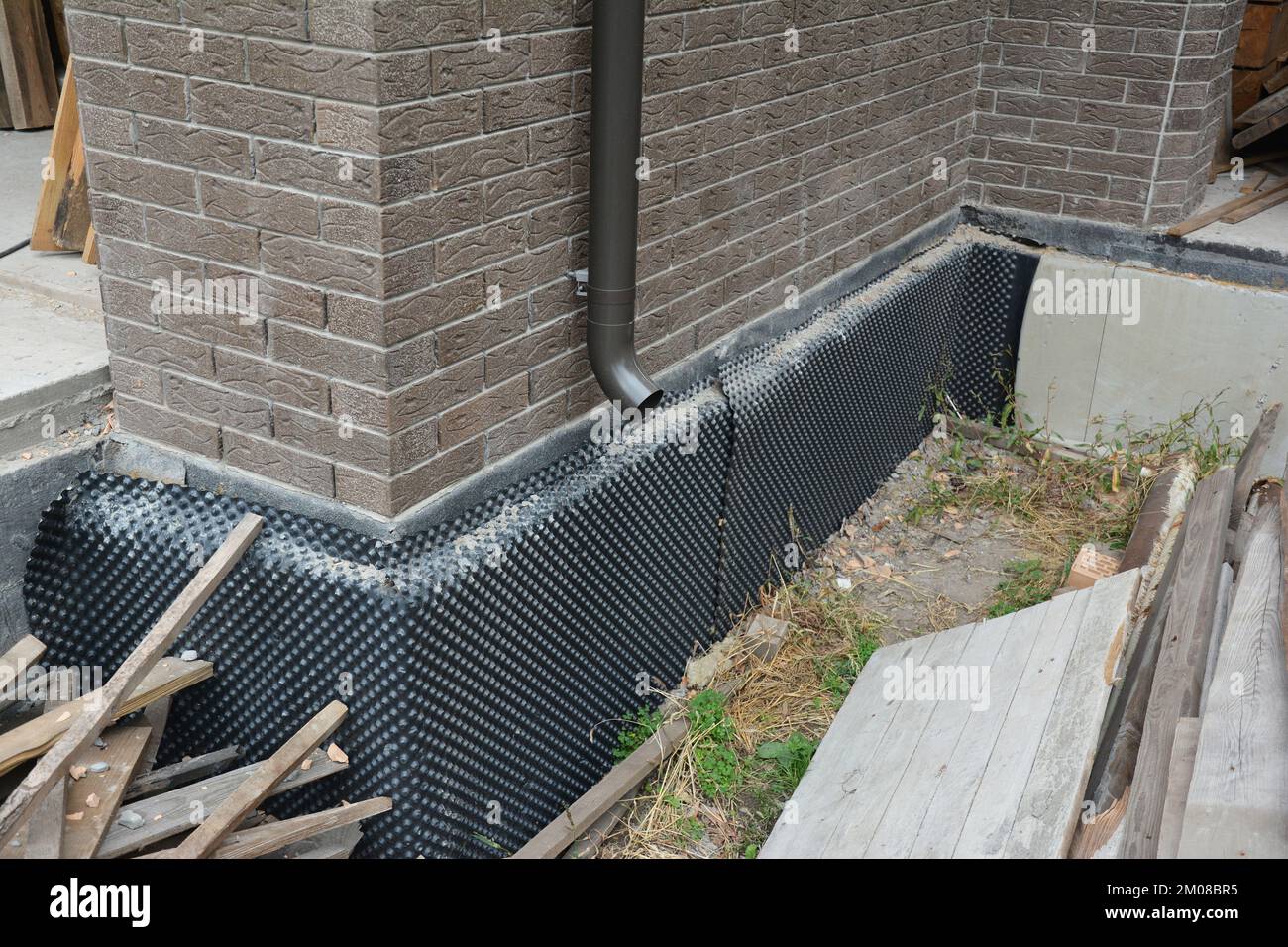Do you need a professional damp inspection? Find out with damp proofing newcastle
Exploring the Different Strategies and Solutions for Effective Damp Proofing
Dampness in structures poses considerable obstacles to both structural stability and interior air high quality. Numerous techniques and solutions have actually emerged to combat this prevalent issue. From conventional damp-proof membranes to cutting-edge chemical therapies, each method uses unique benefits. Recognizing these choices is crucial for reliable wetness control. However, selecting the right remedy relies on specific building problems and demands, triggering further exploration into one of the most efficient wet proofing techniques available.
Comprehending the Root Causes Of Moisture
Although moisture can develop from various sources, recognizing these reasons is important for efficient removal. Typically, dampness stems from three primary sources: climbing moist, penetrating damp, and condensation. Increasing moist happens when groundwater travels up-wards with porous materials, such as brick or rock, commonly due to a lack of a reliable obstacle (damp proofing newcastle). Passing through moist is generally created by exterior variables, consisting of roofing leaks, damaged gutters, or harmed wall surfaces, enabling water to infiltrate a building. Condensation, on the various other hand, arises from excess moisture airborne, frequently aggravated by poor ventilation and temperature level differences, bring about water droplets basing on surfaces. Determining these underlying issues is important, as each type of moisture calls for a tailored approach for removal. Appropriate evaluation aids in determining the most reliable options, eventually securing the structural stability of a building and improving indoor air high quality
Standard Damp-Proof Membranes

Chemical Damp-Proofing Solutions
Chemical damp-proofing services offer an ingenious strategy to stopping wetness breach in structures. These approaches normally involve the application of fluid chemicals that permeate masonry and develop a barrier versus rising moist. Commonly made use of chemicals include silanes, siloxanes, and other water-repellent representatives that respond with surface area products to create a hydrophobic layer.The application procedure normally needs drilling openings right into the walls, infusing the chemical service, and permitting it to treat. This approach is specifically useful for older structures where typical damp-proof membranes may be unwise. Chemical damp-proofing can be less disruptive and extra affordable than comprehensive improvement projects.While efficient, these services depend on correct application and ecological problems for peak performance. mould treatment newcastle. Regular maintenance and tracking are important to assure the long life of the damp-proofing therapy. Generally, chemical damp-proofing stands for a functional option for safeguarding structures against moisture-related damage
Dental Caries Wall Building Methods
Cavity wall surface construction methods supply various advantages, particularly in wetness control and energy efficiency. By integrating an air gap between 2 layers of stonework, these walls properly alleviate water access while enhancing insulation. This mix not only safeguards frameworks from dampness yet likewise adds to decreased power usage.
Benefits of Cavity Wall Surfaces
When thinking about efficient moist proofing methods, the advantages of dental caries wall surfaces stand out plainly. Dental caries wall surfaces include two different layers, developing an air void that properly reduces wetness infiltration. This style minimizes the danger of wetness, as the external wall surface serves as a barrier against rainfall and water access. Additionally, cavity walls boost thermal insulation, which adds to energy effectiveness by minimizing heat loss. They likewise offer audio insulation, aiding to develop a quieter interior setting. Furthermore, the air gap permits air flow, which assists in moisture control and reduces the possibility of mold development. These advantages not just improve the general convenience of a building however additionally add to its durability and architectural stability.
Moisture Control Strategies
Reliable dampness control methods are essential in dental caries wall surface construction to guarantee long-term security against moisture. One main method entails the consolidation of weep openings, which facilitate water drainage from the dental caries, avoiding build-up. Additionally, the usage of breathable membrane layers can help manage wetness degrees while permitting entraped vapor to run away. Correct placement of insulation is also vital, as it ought to not obstruct drainage paths. Making sure that the outer leaves of the tooth cavity wall are built with waterproof products improves general sturdiness. Routine maintenance checks are vital to determine any type of clogs or damages early, you could try these out safeguarding the framework's integrity. Ultimately, a combination of these techniques forms a robust protection against moisture breach in cavity wall surfaces.
Insulation and Energy Effectiveness
Insulation plays an essential role in boosting power efficiency within cavity wall surface building and construction. By incorporating insulating products, these wall surfaces create a thermal barrier that lessens warmth loss and decreases power consumption. Effective insulation not only assists preserve a secure indoor temperature yet likewise mitigates the threat of wetness, as it avoids condensation within the wall dental caries. Numerous strategies, such as the use of stiff foam boards or mineral woollen, can be utilized to achieve suitable insulation performance. Additionally, appropriate setup is important to ensure that gaps and spaces are minimized, which can otherwise compromise energy effectiveness. Inevitably, a well-insulated cavity wall adds substantially to general sustainability and decreases heating and air conditioning costs for homeowners.
Outside Damp Proofing Approaches
External wet proofing approaches are crucial for securing frameworks from wetness seepage. 2 reliable techniques include the application of water-proof membrane layers and the installation of French drains pipes. These services aid mitigate water build-up and protect the honesty of structures.
Waterproof Membrane Application
While various techniques exist for avoiding dampness ingress, the application of water-proof membrane layers continues to be a highly efficient exterior moist proofing technique. These membranes are generally made from products such as polyethylene, rubber, or changed bitumen, giving a robust obstacle versus water infiltration. The installment procedure includes using the membrane layer to the exterior surface areas of wall surfaces or structures, ensuring total insurance coverage to stop leakages. Correct attachment and sealing at joints are important to optimizing effectiveness. Waterproof membrane layers can be applied in different kinds, including liquid coverings and sheet membranes, permitting flexibility based upon the certain requirements of the structure. This approach not just shields buildings from moisture however additionally enhances their durability and architectural honesty.
French Drainpipe Installment
One effective method for handling groundwater and preventing get more dampness accumulation around a building's foundation is the installment of a French drain. This drain system consists of a trench filled up with crushed rock and a perforated pipeline that redirects surface water far from the structure. Appropriate installation requires careful preparation, making sure that the drainpipe slopes away from the structure to facilitate ideal water circulation. In addition, the location of the drain is important; it needs to be positioned in areas prone to pooling or excess moisture. Normal upkeep, including clearing up particles from the gravel and making sure the pipeline remains unhampered, is essential for long-term performance. Inevitably, a well-installed French drain can greatly lower the danger of water-related problems in cellars and structures.
Inside Waterproofing Approaches
Inside waterproofing strategies are vital for shielding a building's interior from wetness infiltration and possible water damage. These methods typically involve the application of specific products and techniques made to create a moisture obstacle within the framework. One typical method is making use of water resistant coverings or sealers on walls and floorings, which protect against moisture from passing through surfaces.Additionally, installing indoor water drainage systems, such as sump pumps, can properly manage water build-up in cellars and creep spaces. Another technique involves the usage of vapor barriers, which are installed to prevent dampness movement from the ground into living spaces.Moreover, dealing with any kind of fractures or gaps in wall surfaces or structures with suitable sealers assures a thorough protection against water breach. By carrying out these indoor waterproofing methods, homeowner can considerably decrease the danger of mold growth, structural damages, and other moisture-related concerns. Correct implementation of these methods is important for long-term defense and building stability.
Regular Upkeep and Assessment Practices
Normal upkeep and assessment practices are essential for ensuring the lasting efficiency of damp proofing remedies in any kind of building. Routine checks enable homeowner to determine very early indications of dampness intrusion, such as peeling off paint, mold growth, and stuffy smells. These indications can signal underlying problems that call for prompt attention.Inspections must be carried out at least annually, concentrating on vulnerable locations like cellars, crawl spaces, and exterior wall surfaces. During these assessments, homeowner need to take a look at sealants, drain systems, and air flow to verify they work correctly.Additionally, keeping downspouts and seamless gutters is important, as clogged systems can cause water buildup near the foundation. Carrying out a normal upkeep routine, in addition to timely fixings, can substantially extend the life expectancy of damp proofing procedures and safeguard the architectural honesty of the structure. Positive actions eventually add to the overall health and wellness of the living atmosphere.
Often Asked Questions
How Much Time Does Damp Proofing Generally Last?
The duration of wet proofing performance varies, generally lasting between 20 to half a century. Elements such as application quality, ecological conditions, and maintenance techniques considerably affect the durability of the moist proofing therapy.

Can I Damp Proof My Home Myself?
The specific considered the usefulness of do it yourself damp proofing. With proper research and the appropriate products, it is possible. However, they also acknowledged the significance of expert advice to guarantee resilient effectiveness and avoid future concerns.
What Are the Signs of Ineffective Damp Proofing?
Signs of inefficient damp proofing include persistent mildewy smells, visible mold and mildew growth, peeling off paint, damp patches on walls, and timber degeneration - mould treatment newcastle. House owners need to deal with these problems without delay to stop more damages and health and wellness problems
Does Damp Proofing Affect Indoor Air High Quality?

Exactly How Much Does Expert Damp Proofing Price?
Professional moist proofing costs vary significantly, generally varying from $1,000 to $5,000 depending upon the home's dimension, the extent of the damp problem, and selected techniques. Each her response scenario calls for a customized analysis for precise rates. Commonly, moisture originates from 3 main resources: increasing moist, penetrating moist, and condensation. When taking into consideration efficient moist proofing techniques, the benefits of tooth cavity walls stand out prominently. External moist proofing techniques are important for securing frameworks from dampness seepage. While various methods exist for avoiding dampness ingress, the application of water-proof membranes stays a very reliable outside wet proofing method. Indicators of inadequate wet proofing include persistent musty smells, visible mold growth, peeling off paint, damp spots on walls, and timber degeneration.